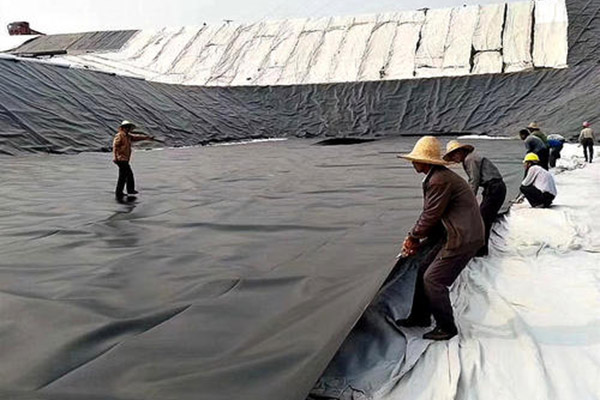The purpose of
geomembrane is to use its anti-permeability effect. Geomembrane should be impermeable to the molecular structure and manufacturing process. However, due to the unevenness and defects in manufacturing, the commonly used geomembrane must not leak. It's just that it is relatively difficult to permeate and what is more important is whether the geomembrane can maintain its anti-seepage performance under the action of long-term water head when it contacts the actual soil (or other materials). Due to the uneven contact surface, rough soil particles, large local deformation of the soil, etc., the geomembrane may be broken or torn under the action of high water head, and its anti-seepage performance will be lost or weakened. Therefore, corresponding anti-seepage tests are also required.

The permeability of geomembrane can be expressed by permeability coefficient or water permeability. The advantage of the former is that it is easy to compare with the permeability coefficient of the soil. The permeability coefficient of geomembrane is generally small, but its thickness is also small, which more fully reflects its permeability. For reservoirs and waterways, the impact of water leakage is small, but the isolation requirements for pollution sources in environmental engineering are very strict.
The permeability coefficient of the geomembrane is not a certain value, but changes according to the positive pressure of the geomembrane, and the overall trend decreases as the pressure increases. In engineering applications, when the geomembrane has greater pressure (head or target load) and the soil particles in contact with it are relatively coarse, the geomembrane is easily punctured and loses its anti-seepage ability. In this case, under the condition that the geomembrane is in contact with the actual soil, it is necessary to conduct an anti-seepage test with a stepwise increase in water pressure until the geomembrane leaks. The impermeability test is more important than the permeability test of the geomembrane under certain circumstances. Generally speaking, the greater the pressure, the coarser the soil particles, and the more likely the geomembrane is to burst. In a set of tests, the same PE film was in contact with fine sand, medium sand, and coarse sand. As a result, the pressure of the punctured water was 0.5 MPa, 0.4 MPa, and 0.3 MPa, respectively. When two layers of PE film are used in contact with coarse sand, the pressure to break through the water has increased to 0.6 MPa so far.
It can be seen that the geomembrane should not be in contact with coarse soil particles, and composite geomembrane must be used as needed to protect the geomembrane from damage. All-Soviet Research Institute of Hydraulic Research also spread polyethylene film on different inclined gravel cushions, applied water pressure to the film to destroy it, and set polyethylene films of different thicknesses on different cushions to determine the resistance to hydraulic damage The experimental results are shown in Table 2.2.5. It can be seen from the table that the finer the particles of the buffer layer, the better the tilt, and the stronger the damage ability of the polyethylene film to water pressure. A polyethylene film with a thickness of 0.25mm is spread on a well-inclined gravel mat, which can withstand a head of 200m. A polyethylene film with a thickness of 0.65mm is spread on a poorly inclined gravel mat, which can withstand a water head of 215m.

